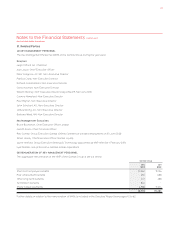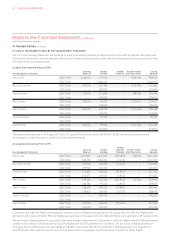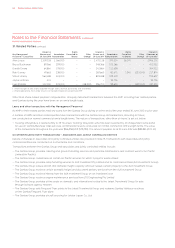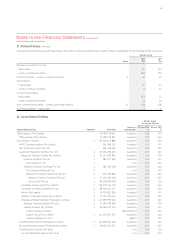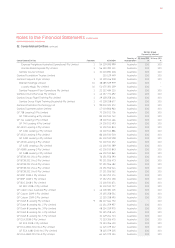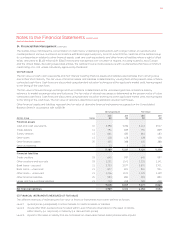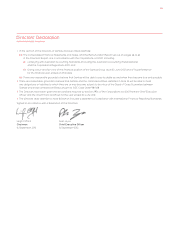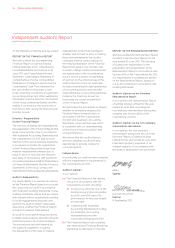Qantas 2012 Annual Report Download - page 128
Download and view the complete annual report
Please find page 128 of the 2012 Qantas annual report below. You can navigate through the pages in the report by either clicking on the pages listed below, or by using the keyword search tool below to find specific information within the annual report.
FOR THE YEAR ENDED 30 JUNE 2012
Notes to the Financial Statements continued
A financial instrument is any contract that gives rise to both a financial asset of one entity and a financial liability or equity instrument
of another entity. The Qantas Group is subject to liquidity, interest rate, foreign exchange, fuel price and credit risks. These risks are
an inherent part of the operations of an international airline. The Qantas Group manages these risk exposures using various financial
instruments, governed by a set of policies approved by the Board. Qantas Group’s policy is not to enter, issue or hold derivative
financial instruments for speculative trading purposes.
The Qantas Group uses different methods to assess and manage different types of risk to which it is exposed. These methods
include correlations between risk types, sensitivity analysis in the case of interest rate, foreign exchange and other price risks,
and ageing analysis and sensitivity analysis for liquidity risk and credit risk.
A LIQUIDITY RISK
Liquidity risk is the risk that an entity will encounter difficulty in meeting obligations associated with financial liabilities. The Qantas
Group manages liquidity risk by targeting a minimum liquidity level, ensuring long-term commitments are managed with respect
to forecast available cash inflows, maintaining access to a variety of additional funding sources including commercial paper and
standby facilities and managing maturity profiles.
Qantas may from time to time seek to purchase and retire outstanding debt through cash purchases in open market transactions,
privately negotiated transactions or otherwise. Any such repurchases would depend on prevailing market conditions, liquidity
requirements and possibly other factors.
The following tables summarise the contractual timing of cash flows, including estimated interest payments, of financial liabilities
and derivative instruments. Contractual amount assumes current interest rates and foreign exchange rates.
Qantas Group
2012
$M Less than 1 Year 1 to 5 Years
More than
5 Years Total
FINANCIAL LIABILITIES
Trade creditors – –
Bank loans – secured1 , , ,
Bank loans – unsecured1 – ,
Other loans – unsecured1 – ,
Lease and hire purchase liabilities1
Derivatives – inflows () () () (,)
Derivatives – outflows , ,
Net other financial assets/liabilities – outflows –
Total financial liabilities , , , ,
1 Recognised financial liability carrying values are shown pre-hedging.
2011
$M
FINANCIAL LIABILITIES
Trade creditors – –
Bank loans – secured1 , , ,
Bank loans – unsecured1 , – ,
Other loans – unsecured1 , – ,
Lease and hire purchase liabilities1 –
Derivatives – inflows () (,) () (,)
Derivatives – outflows , ,
Net other financial assets/liabilities – inflows –
Total financial liabilities , , , ,
1 Recognised financial liability carrying values are shown pre-hedging.
B MARKET RISK
The Qantas Group has exposure to market risk in the following areas: interest rate, foreign exchange and fuel price. The following
section summarises the Qantas Group’s approach to managing these risks.
34. Financial Risk Management
QANTAS ANNUAL REPORT 2012126



